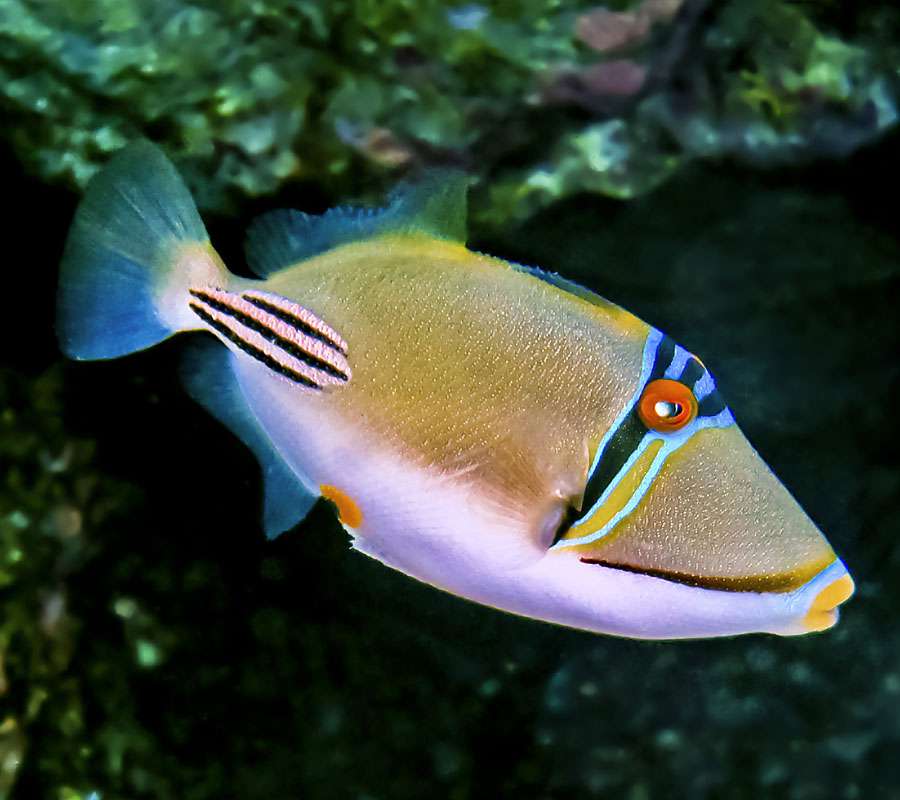
Size
11.8 inches
Physical characteristics and behavior
Picasso triggerfish can be distinguished from other species by their angular bodies, distinctive color, fin arrangement, and protruding dorsal spine. On the dorsal fin, it is situated immediately above and below the eye. Strong and extremely inflexible, it serves as an adaptation for defense. The way this spine locks into a defensive position when raised gives the triggerfish its name. There are no anal spines, however there are three dorsal spines, twenty-three to twenty-six dorsal soft rays, and twenty-one to twenty-three anal soft rays. Its teeth are sharp and cutting, and its small yet powerful jaw.
Habitat
In its natural environment, the Picasso Triggerfish prefers a salinity range of 1.020 to 1.023 and a temperature range of 77.0 to 80.0 degrees Fahrenheit.
Care When Keeping as Pet

- Tank Conditions
To establish caverns and other structures as territory, use living rocks. Picasso, don’t use corals. Triggerfish will significantly harm the reef and are not reef safe. As this species is known to move objects about, secure items onto a sandy substrate.
The ideal water qualities for a Picasso Triggerfish are very typical for a saltwater aquarium. Use a heater to raise the temperature to between 76 and 82 degrees Fahrenheit, and aquarium salts to produce a solution with a specific gravity of 1.021 to 1.025. The pH must range from 8.1 to 8.4. You might need to spend money on a water pump or a filter with a powerful outlet because the aquarium needs to be well-lit and well-circulated.
- How big of a tank do they require?
Not only does giving your Picasso Triggerfish plenty of room make it more comfortable in your aquarium, but it also lessens aggression. Although larger tanks may further lessen the likelihood of violent outbursts, the minimum tank size is 100 gallons.
- Tank Mates
Despite being more relaxed than most triggerfish, Picasso Triggerfish are territorial and aggressive. Although there are techniques to manage this, it is not possible to completely stop these habits. They can be added to communal aquariums, however the other fish in your tank will be very important. So that everyone may defend themselves, any other fish should be aggressive as well. Avoid choosing little fish since if they can fit in a Picasso Triggerfish’s mouth, they will be consumed quickly. The likes of lionfish, snowflake eels, and surgeonfish are possible options (of a similar size).
- Diet
Picasso Due to their predominant carnivorous nature, triggerfish require a lot of meaty, protein-rich meals. They would eat invertebrates like clams, shrimp, and snails in the wild. They occasionally succeeded in obtaining larger meals like squid.
- Care
Picasso triggerfish are relatively simple to care for after an aquarium has been built up to their satisfaction and suitable tank mates have been selected and introduced. They should be content in their surroundings with general tank care (regular water changes, etc.) and a good diet. This species has been known to bite when threatened, so use caution when cleaning the tank with your hands in there.
Diseases should be uncommon in a clean tank, but Picasso Triggerfish can still catch common saltwater illnesses. They are resilient fish that benefit from therapy well. To administer the treatment, quarantine them in a different tank. Before introducing fresh fish to your setup, it’s a good idea to isolate them for a few weeks.
Table





